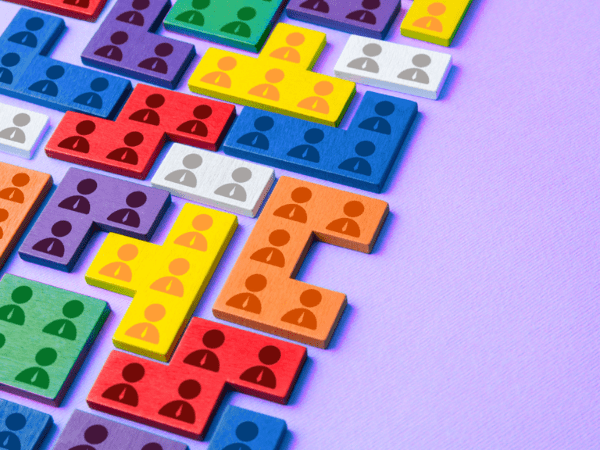
In this third and final blog post in our series, we’ll look at how CRI and BakerRipley’s models overturn the assumptions driving many mainstream attempts to help low-income people and disadvantaged areas. What are some of these assumptions? Too often, government and nonprofits consider their assistance the starting point of change. Needs are mapped, deficiencies are identified, and outside money is sought, turning local people into clients and dependents. The individuals who emerge as the leaders are those best able to harness outside resources. Ushering in service providers, experts, and money becomes more important than building strong internal relationships among neighbors who can help each other.
This standard method of intervention undervalues individual and communal capacities, and encourages residents to think of themselves as essentially deficient, incapable of improving their and their community’s futures. In short, it doesn’t build social capital.
In the first blog post, we defined social capital and looked briefly at how CRI’s cross-cutting, place-based institutions help it emerge from within specific neighborhoods in Shreveport. BakerRipley’s appreciative inquiry model was highlighted in our second post, with its notable sequencing of how expanded social capital precedes building a community center.
What are some takeaways from both CRI and BakerRipley? Let’s look at four:
- First, they focus on neighborhoods because they are the scale at which the most important micro-level social dynamics take place. Efforts to build community are most likely to work at this scale. While broader factors such as the national economy and urban governance are important, neighborhoods have an outsized influence on their residents due to their direct and continuous influence. This effect holds especially for infants, children, and youth. Raj Chetty and his colleagues write in a National Bureau of Economic Research Working Paper, “neighborhoods have substantial causal effects on children’s long-term outcomes at a highly granular level.”
- Second, the organizations see low-income neighborhoods as those most in need of greater social capital. Although all Americans are more isolated than a few generations ago, only some neighborhoods face the kind of disconnectedness and social breakdown that severely hampers their lives. The people in these places not only have fewer resources but are also more dependent on their neighbors. In Blueprint: The Evolutionary Origins of a Good Society, sociologist and physician Nicholas Christakis notes that working-class and poor Americans “report relying on their friends and neighbors for practical help such as child care, spiritual advice, car and home repairs, and cash gifts or loans more often than middle-class Americans do.”
- Third, they all see establishing a physical presence as crucial to building social capital in the neighborhoods where it is most depleted. Such a presence and full-time staffing enable the organizations to develop long-term relationships with residents and work to improve social ties, expectations, and norms—all of which contribute to improving individual outcomes. They then use the physical locales to fill an important gap by acting as an intermediary, bringing together a variety of public and private services in one location. These subsequently help them deepen relationships and better reach residents. The centers help poor people navigate government bureaucracies, file paperwork, and fill out applications; avoid being overcharged or cheated; and save time and money by eliminating the need to visit distant offices. CRI sees the relational goals as paramount, with services only possible after they have been advanced. BakerRipley sees the relational goals as a mechanism to more effectively achieve outcomes.
- Fourth, both organizations prioritize relationships and bolster them systematically. They employ intricate, multifaceted frameworks for strengthening and rewiring social networks in neighborhoods.
Identifying, developing, and connecting local leaders is an essential part of this goal. CRI seeks leaders who will model constructive behavior, set new norms for the area, and gradually shift the culture to make it more trusting and cooperative. BakerRipley envisions leaders using their networks to bring people together to solve problems, set narratives, and ensure they take advantage of opportunity. In each case, the organizations train scores of volunteers to help connect neighbors and reshape the community.
Building up neighborhood strengths instead of trying to overcome perceived weaknesses not only respects the dignity of the people targeted but is also more likely to succeed in the long term. Communities need “the development of policies and activities based on the capacities, skills, and assets of lower income people and their neighborhoods,” as John Kretzman and John McKnight write in Building Communities from the Inside Out.
What are some of these assets? They include leadership from within the community: connectors, role models, norm setters, institution builders, and community organizers. When communities foster leadership from within that can better connect people, they develop the social capital and collective efficacy necessary to address the social problems they wish to tackle.
Relationship building is not easy. The work of these organizations is labor intensive and requires long-term horizons to succeed. As Christian Seelos, systems theorist and director of the Global Innovation for Impact Lab at the Stanford Center on Philanthropy and Civil Society, suggests, “Reducing the pace of decision-making, of driving change, of disrupting social orders, and of fueling our appetite to report numbers that demonstrate how good, how smart, and how responsible we are may well be the most useful contribution to making philanthropic work more effective.”
Reconfiguring a neighborhood’s social system requires vision, patience, and risk-taking, especially given the up-front costs and slow progress that may be difficult to track. Such demands may discourage many nonprofits and philanthropies. But achieving real systemic change may require a reordering of priorities. CRI and BakerRipley are two organizations that show us all what’s possible.
- Read Part 1 and Part 2 of this series.
- Learn more about building a flourishing society by reading Seth Kaplan’s book, Fragile Neighborhoods: Repairing American Society, One Zip Code at a Time.